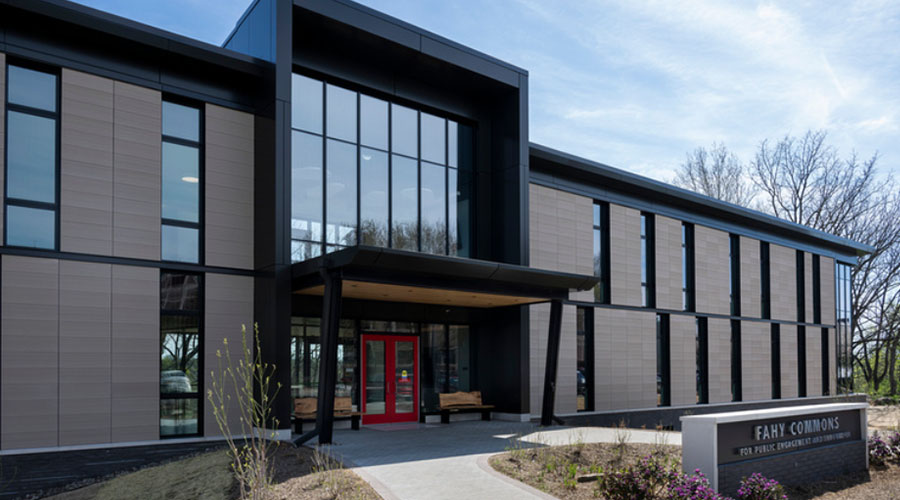Making Photovoltaic Roofing Systems Work
The photovoltaic (PV) industry is facing challenges. Growth in the industry has slowed as a result of lower government subsidies and supply-chain issues.
The good news for institutional and commercial facilities is that the development of more efficient, cost-effective solar panels, combined with volatile energy prices, still makes PV technology an attractive alternative for managing energy prices and supporting sustainability efforts. Maintenance and engineering managers considering installing a PV system need to consider several practical factors before, during, and after installation of a rooftop system.
Understanding Photovoltaics
A PV cell is a specialized semiconductor diode that converts light from the sun into direct current (DC). PV cells have no moving parts and require little maintenance. Rooftop application generally feature two primary types of panels:
Amorphous silicon panels. These panels consist of a thin layer of silicon deposited on a backing. This thin film can come in rigid panels or as a flexible lightweight panel that can be adhered to a membrane and fastened directly to the roof membrane.
Crystalline silicon panels. These panels are more common, generate more wattage, and are more durable than amorphous or thin-film panels. They typically are made by laminating the cells between tempered glass and plastic and framing it with aluminum. Thin panels require a larger surface area compared to a crystalline panel, due to their reduced efficiency. But in low-light conditions, thin-panel performance is better.
Also, PV systems are rated in watts, based on the amount of electricity they produce at maximum output. For example, a 1 kilowatt (kW) system will produce 1,000 watts of power at maximum output. A 15kW system will produce 15,000 watts of power at maximum output. Line loss, sunlight exposure, temperature, dust, and dirt on the panels can affect actual wattage PV systems produce.
Rooftop Installations
Before installing a PV system, managers need to consider several critical factors, including business goals, energy audits, location, system size and type, roof age and type, budget, and financial incentives. Each of these factors will play an important role in the success of the project.
Because each option comes with various costs, understanding the business goals might be the most important factor to consider before selecting a system. Common goals include supplementing the cost of electricity, replacing all electricity, or developing a system to demonstrate their commitment to green energy.
Goals. In many cases, a business will identify multiple goals. But having clear goals increases the likelihood of installing a PV system that meets performance expectations.
Audits. Energy audits are a practical way to identify low-cost options to reduce energy use and can result in the installation of a smaller, less costly PV system.
Roof issues. Roof size and useable space are primary factors in determining the type and size of PV system. Since crystalline panels typically have a higher power output per square foot than amorphous panels, producing the same power output requires fewer crystalline panels. If available space is not an issue, amorphous panels might be the most efficient and cost-effective option.
Location. Location and the availability of full and partial sun affect PV performance. A system in Phoenix will generate about 40 percent more electricity than the same system in Chicago. Managers also need to evaluate sunlight and shading. A mistake here can mean an improperly sized system.
Roof Evaluation
After managers have determined the most appropriate PV system size, the next step is to evaluate the roof system to determine its viability, expected performance, and options to attach a PV system.
Most PV systems are projected to have a service life of 25-30 years. The average life of a commercial roof is about 17 years. The ability to install a PV system on a 5- or 10-year-old roof without significant modifications may be limited.
Prior to installing a new PV system, it is imperative to evaluate the condition of the existing roof system to determine the appropriate maintenance, repairs or replacement that might be required. Even if the roof appears to be in a functional condition — imagine what the roof might look like after installation of the PV system. Construction traffic, mounting bracket penetrations, and other factors might result in unintended and unseen damage that is much more difficult and costly to repair after the PV system has been installed.
If the roof requires replacement, it pays to consider the options. The reflective properties of the roof system might impact the performance of the PV system. For each 2 degrees above 77 degrees, crystalline panels can lose 0.3-0.5 percent efficiency. Higher temperatures do not significantly impact amorphous panels. Managers should consider white, highly reflective, low-emissivity roof systems as an option.
Related Topics:













